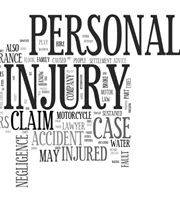Some Common Minnesota Insurance Company Tricks

Personal injury attorneys are committed to maximum compensation for victims. Insurance companies, on the other hand, so whatever it takes to reduce or deny compensation. These firms make money by collecting premiums and not by paying claims. That’s especially true for non-customer claims. So, insurance company lawyers often contest liability in tort cases, like car crashes and dog bites.
Minneapolis workers’ compensation cases work a little differently. Legally, insurance company lawyers cannot contest fault in these matters, at least in most cases. So, these lawyers usually challenge the reasonableness of the victim’s medical bills, as outlined below.
Contributory Negligence
In many vehicle collision cases, there is evidence that both the victim and tortfeasor (negligent driver) were partially at fault. For example, the victim might have made a “California stop” at a red light at the same moment the tortfeasor barreled through the intersection at an excessive speed.
A personal injury attorney basically has two opportunities to defeat this defense. First, the Minnesota judge usually holds a hearing to determine if there is any evidence of multiple fault. Frankly, these hearings are difficult to win. If the insurance company produces a scintilla (tiny crumb) of evidence, the judge usually allows the defense to go forward.
If the contributory negligence defense goes to the jury, that jury must apportion responsibility between the parties. To return to the previous example, an attorney could point out that the tortfeasor was speeding recklessly and that the victim slowed to almost a complete stop, looked both ways, then pulled into the intersection.
Minnesota is a modified comparative fault state with a 51 percent bar. So, the victim/plaintiff receives a proportional share of damages if the tortfeasor was at least 51 percent responsible for the car crash.
Assumption of the Risk
This defense is very common in slip-and-fall, swimming pool drowning, and some other premises liability cases. There are two main elements:
- Voluntary Assumption: An insurance company can show voluntariness either by a waiver or by participating in a dangerous activity. Not all written waivers are “voluntary” in this context. Many are take-it-or-leave-it contracts of adhesion.
- Known Risk: Moreover, not all risks are known risks. Minneapolis football players probably assume the risk of many bodily injuries. But they do not assume unknown risks, such as non-concussion head injuries or a fight that a drunken fan instigates.
Generally, the insurance company has the burden of proof to establish each element by a preponderance of the evidence. A lack of evidence on either point derails the defense altogether.
Medically Unnecessary Expenses
Most large Minnesota workers’ compensation insurance companies have an entire division of doctors whose only job is to challenge bills as MUE. Such challenges are especially common among innovative medical treatments.
To counter these arguments, an attorney often partners with an independent doctor. This person reviews the medical bills and gives an opinion as to their necessity. The judge normally sides with the victim in these cases, especially if the treatment was at least moderately effective.
Reach Out to a Tenacious Attorney
If you need assistance with your case, we can help. For a free consultation with an experienced personal injury lawyer in Minnesota, contact the Gunther Law Office. Home and hospital visits are available.
Resource:
revisor.mn.gov/statutes/?id=604.01







